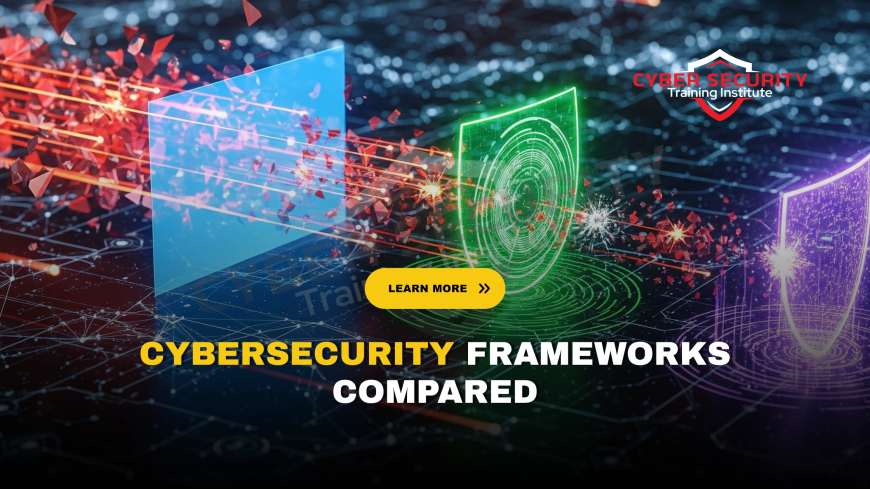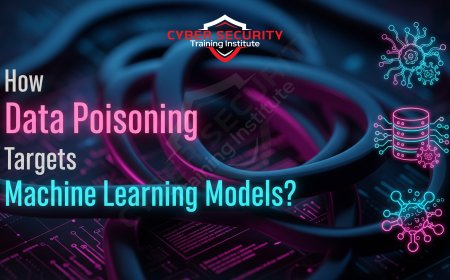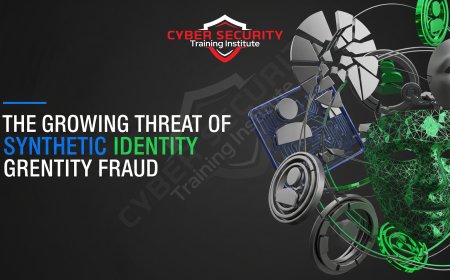How Do Cybersecurity Frameworks Differ: NIST vs ISO vs CIS?
Imagine running a business in 2025, where a single cyberattack could cost millions or even shut you down. With cybercrime projected to hit $10.5 trillion in damages this year, companies are scrambling to protect their digital assets. 26 Enter cybersecurity frameworks—structured guides that help organizations lock down their systems, data, and networks like a digital fortress. But not all frameworks are the same. The NIST Cybersecurity Framework, ISO 27001, and CIS Controls are three of the most popular, each offering unique approaches to tackle cyber threats. Whether you’re a small business owner or a corporate IT manager, choosing the right one can feel like navigating a maze. In this blog post, we’ll break down how NIST, ISO, and CIS differ in a clear, beginner-friendly way, comparing their strengths, uses, and more. By the end, you’ll understand which framework fits your needs and why they’re critical in today’s threat-filled world. Let’s dive in and demystify these cybersecurity powerhouses!

Table of Contents
- What Are Cybersecurity Frameworks?
- Overview of NIST Cybersecurity Framework
- Overview of ISO 27001
- Overview of CIS Controls
- Key Differences Between NIST, ISO, and CIS
- Choosing the Right Framework
- Implementation Challenges
- Real-World Applications
- Conclusion
- FAQs
What Are Cybersecurity Frameworks?
A cybersecurity framework is like a blueprint for protecting your business from digital threats. It’s a set of guidelines, best practices, and standards designed to help organizations identify risks, secure systems, and respond to cyber incidents. Think of it as a playbook for keeping hackers at bay—whether it’s stopping phishing emails (fake messages tricking you into sharing info) or recovering from ransomware (malware locking your data).
Frameworks provide structure, helping companies prioritize security steps and meet regulations. They’re critical because cyberattacks are skyrocketing—80% of organizations faced increased threats in 2024.
Overview of NIST Cybersecurity Framework
The NIST Cybersecurity Framework, developed by the National Institute of Standards and Technology, is a flexible, voluntary guide launched in 2014 and updated regularly, with the latest version (2.0) in 2024. It’s designed to help organizations—especially in critical sectors like energy or finance—manage cyber risks.
NIST is built around five core functions:
- Identify: Understand your systems, data, and risks.
- Protect: Implement safeguards like firewalls or training.
- Detect: Spot incidents quickly, like unusual network activity.
- Respond: Handle attacks, like isolating infected systems.
- Recover: Restore operations after an incident.
It’s free, adaptable for any organization, and aligns with regulations like GDPR. However, it’s not a one-size-fits-all checklist; you tailor it to your needs. NIST is popular in the U.S., with 50% of organizations using it by 2025.
Overview of ISO 27001
ISO 27001, part of the ISO/IEC 27000 series, is an international standard for managing information security, first published in 2005 and updated in 2022. Created by the International Organization for Standardization (ISO), it focuses on building an Information Security Management System (ISMS)—a systematic approach to securing data.
ISO 27001 emphasizes:
- Risk Management: Assess risks and apply controls, like encryption.
- Certification: Companies can get certified by passing audits, proving compliance.
- Comprehensive Scope: Covers people, processes, and tech.
It includes 93 controls across 14 categories, like access control and incident response. Unlike NIST, it’s not free—certification costs can hit $10,000-$50,000, depending on size.
Overview of CIS Controls
CIS Controls, developed by the Center for Internet Security, are a set of 18 prioritized security actions (updated in 2021) designed to be practical and actionable. Aimed at organizations of all sizes, they focus on specific steps to block common attacks, like phishing or malware.
Key features include:
- Prioritized Actions: Start with basics (like securing devices) and scale up.
- Free Resources: Tools and guides are available at no cost.
- Focus on Implementation: Practical steps, like patching software.
CIS Controls are divided into three implementation groups (IG1-IG3), making them beginner-friendly for small businesses (IG1) while scaling for larger ones. They’re used by 70% of small-to-medium businesses in 2025.
Key Differences Between NIST, ISO, and CIS
While all three frameworks aim to boost cybersecurity, they differ in approach, scope, and use. Here’s a breakdown:
- Purpose: NIST is a flexible framework for risk management, ISO is a certifiable standard for an ISMS, CIS is a prioritized list of controls.
14,19,20 - Cost: NIST and CIS are free; ISO requires paid audits.
18 - Scope: NIST is broad and adaptable, ISO is comprehensive with global standards, CIS is focused on actionable steps.
14,19,20 - Certification: Only ISO offers formal certification.
19 - Ease of Use: CIS is simplest, NIST is moderately complex, ISO is rigorous.
20
Here’s a table comparing them:
| Feature | NIST | ISO 27001 | CIS Controls |
|---|---|---|---|
| Purpose | Risk management framework | Certifiable ISMS | Actionable security controls |
| Cost | Free | $10,000-$50,000 | Free |
| Certification | No | Yes | No |
| Ease of Use | Moderate | Complex | Simple |
| Best For | Flexible, critical sectors | Global firms, certification | Small businesses, quick wins |
These differences shape which framework suits specific organizations.
Choosing the Right Framework
Picking a framework depends on your organization’s needs:
- Startups/Small Businesses: CIS Controls are ideal for quick, cost-free implementation.
20 - Critical Infrastructure: NIST suits industries like energy or healthcare needing flexibility.
14 - Global Enterprises: ISO 27001 is best for certification and international compliance.
19 - Hybrid Approach: Many combine NIST’s flexibility with CIS’s actionable steps.
28
Consider budget, size, industry, and regulatory needs. For example, GDPR compliance often pushes firms toward ISO.
Implementation Challenges
Adopting a framework isn’t easy. Common hurdles include:
- Cost: ISO’s audits are pricey; even NIST and CIS require staff training.
18 - Complexity: ISO’s detailed ISMS and NIST’s customization can overwhelm small teams.
19 - Expertise: Lack of skilled staff slows adoption.
18 - Time: Full implementation can take months or years.
14
Starting small and scaling up helps overcome these barriers.
Real-World Applications
Frameworks shine in practice. A 2024 healthcare firm used NIST to secure patient data, reducing breaches by 20%.
These cases show frameworks save money and reputations when applied well.
Conclusion
In 2025, cybersecurity frameworks like NIST, ISO 27001, and CIS Controls are vital shields against rising cyber threats. We’ve explored what frameworks are, detailed each one, compared their differences, and discussed choosing, implementing, and applying them. NIST offers flexibility, ISO provides global certification, and CIS delivers quick, practical steps. Each suits different needs—startups lean toward CIS, global firms choose ISO, and critical sectors pick NIST. With breaches costing millions, picking the right framework is a business lifesaver. Start assessing your needs today and build a secure future.
FAQs
What is a cybersecurity framework?
A set of guidelines to protect systems and data from cyber threats.
What is NIST Cybersecurity Framework?
A flexible, free guide for managing cyber risks, popular in the U.S.
What is ISO 27001?
An international standard for building a certified security management system.
What are CIS Controls?
18 prioritized, free security actions for quick protection.
Is NIST free to use?
Yes, it’s a free, voluntary framework.
Does ISO 27001 offer certification?
Yes, companies can get certified through audits.
Are CIS Controls good for small businesses?
Yes, they’re simple and free, ideal for startups.
Why is ISO 27001 expensive?
Audits and implementation can cost $10,000-$50,000.
Can I combine frameworks?
Yes, many use NIST’s flexibility with CIS’s actions.
What is an ISMS?
An Information Security Management System, central to ISO 27001.
Who uses NIST?
Critical sectors like energy, healthcare, and government.
Is ISO 27001 global?
Yes, it’s recognized worldwide for compliance.
How many CIS Controls are there?
18, split into three implementation groups.
What’s the easiest framework?
CIS Controls, due to their straightforward steps.
Does NIST require audits?
No, it’s voluntary with no formal certification.
Why choose ISO 27001?
For global credibility and regulatory compliance.
What are NIST’s core functions?
Identify, Protect, Detect, Respond, Recover.
Can frameworks stop all attacks?
No, but they reduce risks and improve response.
How long to implement a framework?
Months to years, depending on size and complexity.
Which framework is best for GDPR?
ISO 27001, as it aligns with data protection rules.
What's Your Reaction?
 Like
0
Like
0
 Dislike
0
Dislike
0
 Love
0
Love
0
 Funny
0
Funny
0
 Angry
0
Angry
0
 Sad
0
Sad
0
 Wow
0
Wow
0







![How to Install RHEL 10 on VMware/VirtualBox [Tutorial]](https://www.cybersecurityinstitute.in/blog/uploads/images/202509/image_430x256_68b56dc967a4a.jpg)







